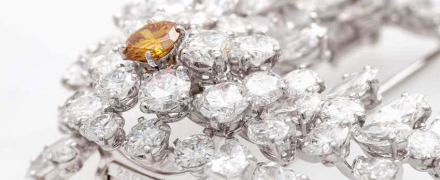open 10 am - 7 pm
laboratory is closed
Cubic Zirconia and zircon-what's the difference?

Zircon is a mineral of silicate class, zirconium silicate ZrSiO4. Often found in nature, mainly as an accessory (less than 1% in the rock) mineral. Used as jewelry inserts. The color of the mineral-brown, red-brown, colorless, green. Often is subject to improvement by the method of radiation to produce the blue color.
Cubic Zirconia is an artificially grown jewelry insert that has no natural analogues. It is a stabilized zirconium oxide-ZrO2.
Kristallizied in the cubic system. Can be a variety of colors, depending on the addition of impurities. There is a common trade abbreviation for cubic Zirconia-CZ (cubic zirconia), which is consonant with "zircon", which caused confusion among buyers.
В геммологической практике бывают весьма увлекательные случаи с диагностикой ювелирных вставок
Но помимо редкости цвета и высокой стоимости таких камней, многие розовые камни выделяются одной замечательной особенностью – они проявляют плеохроизм, то есть в зависимости от положения осмотра камня он может иметь дополнительные оттенки – оранжевый или пурпурный.
Currently, gemstones are produced by two fundamentally different technological methods - the High Pressure - High Temperature method (“HPHT”, High-pressure & High-temperature) and the Chemical Vapor Deposition (“CVD”, Chemical vapor deposition) method. The "HPHT" method is the most tested classical synthesis method, which can be used both carbon deposition on diamond from flux melts and catalytic reactions. In "CVD" synthesis, diamond growth occurs on a seed during carbon deposition mainly from a gaseous medium at relatively low temperatures and pressures.
Jewelry and precious stones are just such a category of goods, when buying which you need to pay attention to many criteria.
Sogdianite is a rather rare mineral and more often it can be found as a collection material (moreover, in systematic collections), and it is extremely rare in jewelry.






